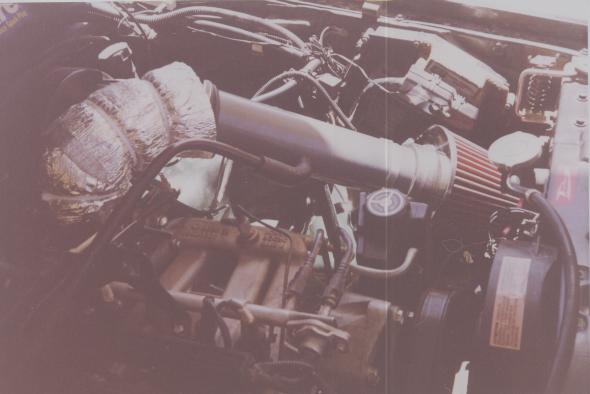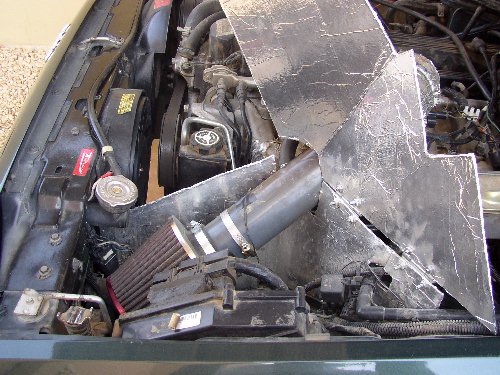|
Heatshield
Since I also wanted the engine to inhale cool air from outside instead of hot air from under the hood, I constructed a heatshield that completely encloses the filter from the back, sides and the top, thus isolating it from the engine compartment altogether.
The heatshield is made from double-ply cardboard and covered with self-adhesive foil tape to make it waterproof. The top part is a separate piece that forms the "lid", and is hinged to the wall of the heatshield. It can be opened and closed to allow inspection of the filter.
Cool air enters the space around the filter from where the old airbox inlet tube used to be. I now have the temperature probe mounted in that space. At any speed over 25mph the intake air temperature is the same as the ambient temperature, so the heatshield definitely works.
Result
The increased airflow partially corrected the rich condition that was caused by the larger injectors and produced a small increase in horsepower and torque. Gas mileage improved by 1.1mpg so I was very happy with the result. Another bonus was that the FIPK occupies less space under the hood than the factory airbox. The only downside was a slight whistle at light throttle but this wasn't intrusive.
|






